Download Barco HDF W series Installation manual
Transcript
HDF W series Safety manual R5905159/02 12/02/2015 Barco nv Noordlaan 5, B-8520 Kuurne Phone: +32 56.36.82.11 Fax: +32 56.36.883.86 Support: www.barco.com/esupport Visit us at the web: www.barco.com Printed in Belgium 1. Safety 1. SAFETY About this chapter Read this chapter attentively. It contains important information to prevent personal injury while installing and using a HDF W series projector. Furthermore, it includes several cautions to prevent damage to the HDF W series projector. Ensure that you understand and follow all safety guidelines, safety instructions and warnings mentioned in this chapter before installing your HDF W series projector. After this chapter, additional “warnings” and “cautions” are given depending on the installation procedure. Read and follow these “warnings” and “cautions” as well. 1.1 General considerations WARNING: Ensure you understand and follow all the safety guidelines, safety instructions, warnings and cautions mentioned in this manual. WARNING: Be aware of suspended loads. WARNING: Wear a hard hat to reduce the risk of personal injury. WARNING: Be careful while working with heavy loads. WARNING: Mind your fingers while working with heavy loads. CAUTION: High pressure lamp may explode if improperly handled. General safety instructions • Before operating this equipment please read this manual thoroughly and retain it for future reference. • Installation and preliminary adjustments should be performed by qualified Barco personnel or by authorized Barco service dealers. • All warnings on the projector and in the documentation manuals should be adhered to. • All instructions for operating and use of this equipment must be followed precisely. • All local installation codes should be adhered to. Notice on safety This equipment is built in accordance with the requirements of the international safety standards IEC60950-1, EN60950-1, UL60950-1 and CAN/CSA C22.2 No.60950-1, which are the safety standards of information technology equipment including electrical business equipment. These safety standards impose important requirements on the use of safety critical components, materials and insulation, in order to protect the user or operator against risk of electric shock and energy hazard and having access to live parts. Safety standards also impose limits to the internal and external temperature rises, radiation levels, mechanical stability and strength, enclosure construction and protection against the risk of fire. Simulated single fault condition testing ensures the safety of the equipment to the user even when the equipment’s normal operation fails. Users definition Throughout this manual, the term SERVICE PERSONNEL refers to persons having appropriate technical training and experience necessary to be knowledgeable of potential hazards to which they are exposed (including, but not limited to HIGH VOLTAGE ELECTRIC and ELECTRONIC CIRCUITRY and HIGH BRIGHTNESS PROJECTORS) in performing a task, and of measures to minimize R5905159 HDF W SERIES 12/02/2015 1 1. Safety the potential risk to themselves or other persons. The term USER and OPERATOR refers to any person other than SERVICE PERSONNEL, AUTHORIZED to operate professional projection systems. A HDF W series projector is intended "FOR PROFESSIONAL USE ONLY" by AUTHORIZED PERSONNEL familiar with potential hazards associated with high voltage, high intensity light beams, ultraviolet exposure and high temperatures generated by the lamp and associated circuits. Only qualified SERVICE PERSONNEL, knowledgeable of such risks, are allowed to perform service functions inside the product enclosure. 1.2 Important safety instructions To prevent the risk of electrical shock • This product should be operated from a mono phase AC power source. • This apparatus must be grounded (earthed) via the supplied 3 conductor AC power cable. If none of the supplied power cables are the correct one, consult your dealer. If you are unable to insert the plug into the outlet, contact your electrician to replace your obsolete outlet. Do not defeat the purpose of the grounding-type plug. • Do not allow anything to rest on the power cord. Do not locate this product where persons will walk on the cord. To disconnect the cord, pull it out by the plug. Never pull the cord itself. • Use only the power cord supplied with your device. While appearing to be similar, other power cords have not been safety tested at the factory and may not be used to power the device. For a replacement power cord, contact your dealer. • Do not operate the projector with a damaged cord. Replace the cord. Do not operate the projector if the projector has been dropped or damaged - until it has been examined and approved for operation by a qualified service technician. • Position the cord so that it will not be tripped over, pulled, or contact hot surfaces. • If an extension cord is necessary, a cord with a current rating at least equal to that of the projector should be used. A cord rated for less amperage than the projector may overheat. • Never push objects of any kind into this product through cabinet slots as they may touch dangerous voltage points or short out parts that could result in a risk of fire or electrical shock. • Do not expose this projector to rain or moisture. • Do not immerse or expose this projector in water or other liquids. • Do not spill liquid of any kind on this projector. • Should any liquid or solid object fall into the cabinet, unplug the set and have it checked by qualified service personnel before resuming operations. • Do not disassemble this projector, always take it to an authorized trained service person when service or repair work is required. • Do not use an accessory attachment which is not recommended by the manufacturer. • Lightning - For added protection for this video product during a lightning storm, or when it is left unattended and unused for long periods of time, unplug it from the wall outlet. This will prevent damage to the device due to lightning and AC power-line surges. To prevent personal injury 2 • Isolate electrically before replacing the lamp or lamp house. Caution: Hot lamp (house). • Caution: High pressure lamp may explode if improperly handled. Refer servicing to qualified service personnel. • To prevent injury and physical damage, always read this manual and all labels on the system before inserting the lamp casing, connecting to the wall outlet or adjusting the projector. • To prevent injury, take note of the weight of the projector. Minimum 4 persons are needed to carry the projector. • To prevent injury, ensure that the lens and all covers are correctly installed. See installation procedures. • Warning: high intensity light beam. NEVER look into the lens ! High luminance could result in damage to the eye. • Warning: extremely high brightness lamps: This projector uses extremely high brightness lamps. Never attempt to look directly into the lens or at the lamp. If the projection distance is less than 6 meter, any person needs to be at least 4 meters away from the projected image. Avoid close range reflection of the projected image on any reflecting surface (such as glass, metal, …) . When operating the projector, we strongly recommend wearing suitable safety glasses. • Before attempting to remove any of the projector’s covers, you must turn off the projector and disconnect from the wall outlet. • When required to switch off the projector, to access parts inside, always disconnect the power cord from the power net. • The power input at the projector side is considered as the disconnect device. When required to switch off the projector, to access parts inside, always disconnect the power cord at the projector side. In case the power input at the projector side is not accessible (e.g. ceiling mount), the socket outlet supplying the projector shall be installed nearby the projector and be easily accessible, or a readily accessible general disconnect device shall be incorporated in the fixed wiring. • Never stack more than two (2) HDF W series projectors in a hanging configuration (truss) and never stack more than three (3) HDF W series projectors in a base stand configuration (table mount). • When using the projector in a hanging configuration, always mount 2 safety cables. See installation manual for the correct use of these cables. • Do not place this equipment on an unstable cart, stand, or table. The product may fall, causing serious damage to it and possible injury to the user. R5905159 HDF W SERIES 12/02/2015 1. Safety • It is hazardous to operate without lens or shield. Lenses, shields or ultra violet screens shall be changed if they have become visibly damaged to such an extent that their effectiveness is impaired. For example by cracks or deep scratches. • Warning: Protection from ultraviolet radiation: Do not look directly in the light beam. The lamp contained in this product is an intense source of light and heat. One component of the light emitted from this lamp is ultraviolet light. Potential eye and skin hazards are present when the lamp is energized due to ultraviolet radiation. Avoid unnecessary exposure. Protect yourself and your employees by making them aware of the hazards and how to protect themselves. Protecting the skin can be accomplished by wearing tightly woven garments and gloves. Protecting the eyes from UV can be accomplished by wearing safety glasses that are designed to provide UV protection. In addition to the UV, the visible light from the lamp is intense and should also be considered when choosing protective eye wear. • Exposure to UV radiation: Some medications are known to make individuals extra sensitive to UV radiation. The American Conference of Governmental Industrial Hygienists (ACGIH) recommends occupational UV exposure for an-8 hour day to be less than 0,1 micro-watts per square centimeters of effective UV radiation. An evaluation of the workplace is advised to assure employees are not exposed to cumulative radiation levels exceeding these government guidelines. The exposer of this UV radiation is allowed for only 1 hour per day for maintenance and service persons. • Cooling liquid circuit. The projector contains a cooling circuit filled with Blue antifreeze diluted (1/3 ethanediol – 2/3 Demi water). When the cooling circuit leaks, switch off the device and contact a service technician. The liquid is not for household use. Keep out of reach of children. Harmful by oral intake. Avoid exposure to pregnant women. Avoid contact with eyes, skin and clothing. Avoid inhale of the noxious fumes. • When the projector is mounted above persons, mount always a lens safety cable. To prevent fire hazard • Do not place flammable or combustible materials near the projector! • Barco large screen projection products are designed and manufactured to meet the most stringent safety regulations. This projector radiates heat on its external surfaces and from ventilation ducts during normal operation, which is both normal and safe. Exposing flammable or combustible materials into close proximity of this projector could result in the spontaneous ignition of that material, resulting in a fire. For this reason, it is absolutely necessary to leave an “exclusion zone” around all external surfaces of the projector whereby no flammable or combustible materials are present. The exclusion zone must be not less than 40 cm (16”) for all DLP projectors. The exclusion zone on the lens side must be at least 5 m. Do not cover the projector or the lens with any material while the projector is in operation. Keep flammable and combustible materials away from the projector at all times. Mount the projector in a well ventilated area away from sources of ignition and out of direct sun light. Never expose the projector to rain or moisture. In the event of fire, use sand, CO 2 or dry powder fire extinguishers. Never use water on an electrical fire. Always have service performed on this projector by authorized Barco service personnel. Always insist on genuine Barco replacement parts. Never use non-Barco replacement parts as they may degrade the safety of this projector. • Slots and openings in this equipment are provided for ventilation. To ensure reliable operation of the projector and to protect it from overheating, these openings must not be blocked or covered. The openings should never be blocked by placing the projector too close to walls, or other similar surface. This projector should never be placed near or over a radiator or heat register. This projector should not be placed in a built-in installation or enclosure unless proper ventilation is provided. • Projection rooms must be well ventilated or cooled in order to avoid build up of heat. • Let the projector cool down completely before storing. Remove cord from the projector when storing. • Heat sensitive materials should not be placed in the path of the exhausted air or on the lamp house. To prevent projector damage • This projector has been designed for use with a specific lamp (house) type. See installation instructions for its correct type. • The air filters of the projector must be cleaned or replaced on regular base (a "clean" booth would be monthly-minimum). Neglecting this could result in disrupting the air flow inside the projector, causing overheating. Overheating may lead to the projector shutting down during operation. • The projector must always be installed in a manner which ensures free flow of air into its air inlets and unimpeded evacuation of the hot air from its cooling system. • In order to ensure that correct airflow is maintained, and that the projector complies with Electromagnetic Compatibility (EMC) requirements, it should always be operated with all of it’s covers in place. • Slots and openings in the cabinet are provided for ventilation. To ensure reliable operation of the product and to protect it from overheating, these openings must not be blocked or covered. The openings should never be blocked by placing the product on a bed, sofa, rug, or other similar surface. This product should never be placed near or over a radiator or heat register. The device should not be placed in a built-in installation or enclosure unless proper ventilation is provided. • Ensure that nothing can be spilled on, or dropped inside the projector. If this does happen, switch off and unplug the mains supply immediately. Do not operate the projector again until it has been checked by qualified service personnel. • Do not block the projector cooling fans or free air movement around the projector. Loose papers or other objects may not be nearer to the projector than 10 cm (4") on any side. • Do not use this equipment near water. • Special care for Laser Beams: Special care should be used when DLP projectors are used in the same room as high power laser equipment. Direct or indirect hitting of a laser beam on to the lens can severely damage the Digital Mirror Devices TM in which case there is a loss of warranty. • Never place the projector in direct sun light. Sun light on the lens can severely damage the Digital Mirror Devices TM in which case there is a loss of warranty. • Save the original shipping carton and packing material. They will come in handy if you ever have to ship your equipment. For maximum protection, repack your set as it was originally packed at the factory. R5905159 HDF W SERIES 12/02/2015 3 1. Safety • Unplug this product from the wall outlet before cleaning. Do not use liquid cleaners or aerosol cleaners. Use a damp cloth for cleaning. Never use strong solvents, such as thinner or benzine, or abrasive cleaners, since these will damage the cabinet. Stubborn stains may be removed with a cloth lightly dampened with mild detergent solution. • To ensure the highest optical performance and resolution, the projection lenses are specially treated with an anti-reflective coating, therefore, avoid touching the lens. To remove dust on the lens, use a soft dry cloth. Do not use a damp cloth, detergent solution, or thinner. • Rated maximum ambient temperature, t a= 40 °C (104 °F). • The lamp house shall be replaced if it has become damaged or thermally deformed. On servicing • Do not attempt to service this product yourself, as opening or removing covers may expose you to dangerous voltage potentials and risk of electric shock. • Refer all servicing to qualified service personnel. • Attempts to alter the factory-set internal controls or to change other control settings not specially discussed in this manual can lead to permanent damage to the projector and cancellation of the warranty. • Unplug this product from the wall outlet and refer servicing to qualified service technicians under the following conditions: - When the power cord or plug is damaged or frayed. - If liquid has been spilled into the equipment. - If the product has been exposed to rain or water. - If the product does not operate normally when the operating instructions are followed. Adjust only those controls that are covered by the operating instructions since improper adjustment of the other controls may result in damage and will often require extensive work by a qualified technician to restore the product to normal operation. - If the product has been dropped or the cabinet has been damaged. - If the product exhibits a distinct change in performance, indicating a need for service. • Replacement parts: When replacement parts are required, be sure the service technician has used original Barco replacement parts or authorized replacement parts which have the same characteristics as the Barco original part. Unauthorized substitutions may result in degraded performance and reliability, fire, electric shock or other hazards. Unauthorized substitutions may void warranty. • Safety check: Upon completion of any service or repairs to this projector, ask the service technician to perform safety checks to determine that the product is in proper operating condition. • Possible explosion hazard: Always keep in mind the caution below: CAUTION: Xenon compact arc lamps are highly pressurized. When ignited, the normal operating temperature of the bulb increases the pressure to a level at which the bulb may explode if not handled in strict accordance to the manufacturer’s instructions. The bulb is stable at room temperature, but may still explode if dropped or otherwise mishandled. Whenever the lamp house, containing a xenon lamp, has to be dismantled or whenever the protective container or cloth has to be removed from the xenon lamp, authorized protective clothing MUST be worn! To prevent battery explosion 1.3 • Danger of explosion if battery is incorrectly installed. • Replace only with the same or equivalent type recommended by the manufacturer. • For disposal of used batteries, always consult federal, state, local and provincial hazardous waste disposal rules and regulations to ensure proper disposal. Light beam Hazard Distance (HD) HD Light beam Hazard Distance (HD) is the distance from the source at which the intensity or the energy per surface unit becomes lower than the applicable safety limit. The light beam can thus be considered as dangerous if the operator is closer from the source than the HD. Restriction Zone (RZ) based on the HD The HD is defined from the projection lens surface towards the position of the lowest projected beam where the irradiance equals the applicable safety limit. The HD depends on the amount of lumens produced by the projector and the type of lens installed. See next chapter HD in function of the lens Throw Ratio (TR). To protect untrained users the installation shall comply with the following installation requirements: light output levels in excess of the limits shall not be permitted at any point less than 2.0 meters (SH image 1-1) above any surface upon which persons are assumed to stand or 1 meter (SW image 1-1) below or in lateral separation from any place where such persons are assumed to be. See image 1-1. 4 R5905159 HDF W SERIES 12/02/2015 1. Safety RA TH TH HD SW RZ SW RA SH RZ PR SH HD 1m SW SW (A) SIDE VIEW (B) TOP VIEW Image 1-1 A Side view. B Top view. RA Restricted Access location (boot area of projector). PR Projector. TH Theater. RZ Restriction Zone in the theater. SH Separation Height. Must be minimum 2 meter. SW Separation Width. Must be minimum 1 meter. Based on national requirements, no person is allowed to enter the projected beam within the zone between the projection lens and the related hazard distance (HD). This shall be physically impossible by creating sufficient separation height or by placing barriers. The minimum separation height takes into account the surface upon which persons are assumed to stand. On image 1-1 a typical setup is displayed. It must be verified by the installer if these minimum requirements are met. If required a restricted zone (RZ) in the theater must be established. This can be done by using physical barrier, like a red rope as illustrated in image 1-2. PR Image 1-2 1.4 HD in function of the lens Throw Ratio (TR) TR (Throw Ratio) The ratio of the distance to the screen (throw) to the screen width. R5905159 HDF W SERIES 12/02/2015 5 1. Safety HDF series projector Hazard Distance HDF-W30 HDF-W26 HDF-W22 13 12 11 10 9 8 HD [m] 7 6 5 4 3 2 1 0 0,5 1,3 2,0 2,8 3,5 4,3 5,0 5,8 6,5 7,3 8,0 8,8 9,5 10,3 11,0 11,8 12,5 13,3 14,0 TR Image 1-3 HD (in meter) in function of the Throw Ratio (TR) 1.5 Important warnings concerning HDF W series flight cases Important warnings concerning stacking/transporting HDF W series rental flight cases 6 • Stack maximum two (2) HDF W series rental flight cases high. Never higher. • Surface on which flight case is standing must be level to ensure that the total load is evenly spread out among the four wheels. The surface must also be able to support the load safely. • Before stacking or transporting flight cases, check the wheels and their fixation screws for wear or defects. • Before stacking or transporting flight cases, check that the four lock handles on each flight case are in good working order and locked securely. • When stacked, make sure the wheels of the upper flight case are precisely positioned in the stacking dishes of the flight case below. • Stacked flight cases may not be moved. Before stacking, the lower flight case must already be in its final resting position before placing the second upon it. • Never stack loaded flight cases in a truck or other transport medium, unless each flight case is rigidly strapped tight. • In the event of a wheel breaking, flight cases must be rigidly strapped tight to prevent a stack collapsing. • Use an appropriate forklift to raise flight cases and take the necessary precautions to avoid personnel injury. R5905159 HDF W SERIES 12/02/2015








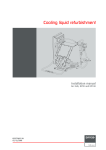
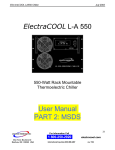
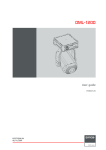
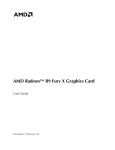
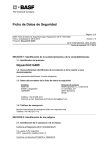
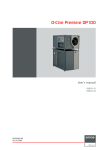
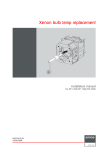
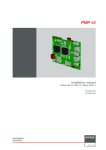
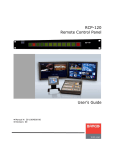
![FLM integration rod replacement + adjustment [v00]](http://vs1.manualzilla.com/store/data/005734078_1-ffddbeaec5f2fd08f6ea79cefb7ee063-150x150.png)